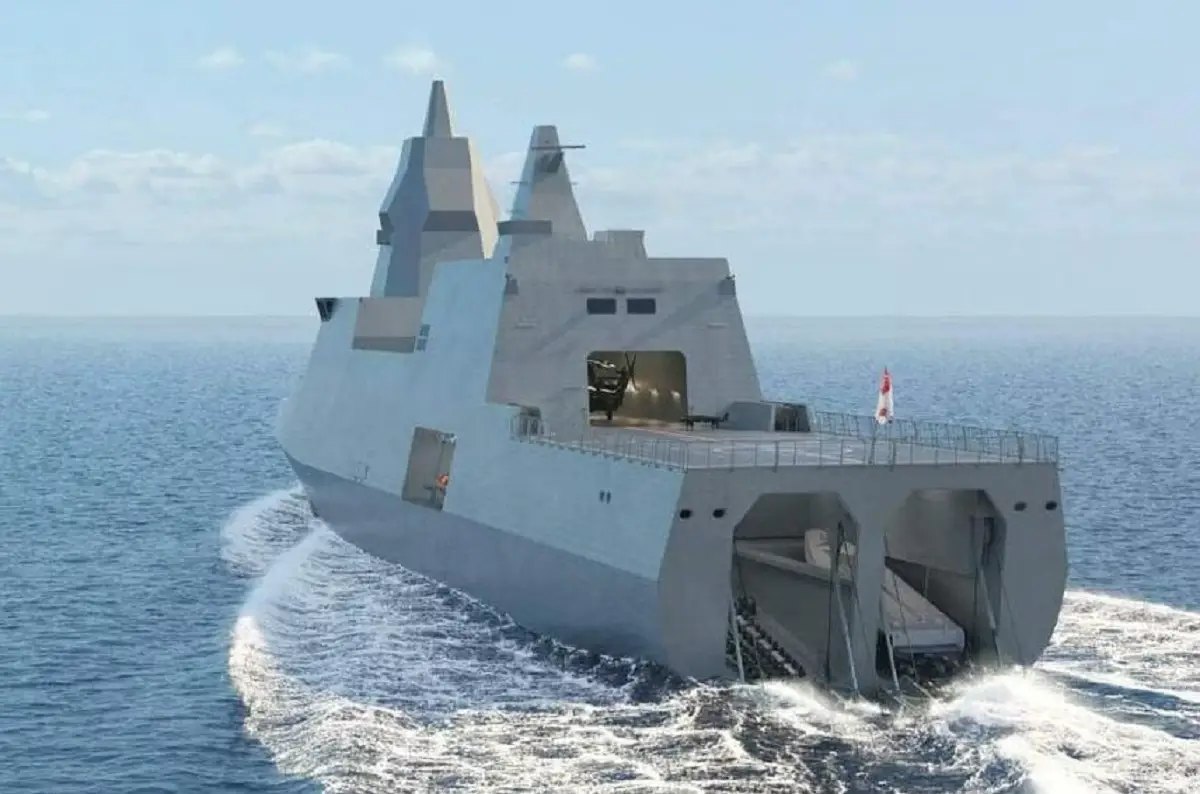Singapore’s ST Engineering Marine reached a significant milestone on 8 March with the commencement of steel-cutting for the nation’s inaugural multirole combat vessel (MRCV). Under the oversight of the Defence Science and Technology Agency (DSTA), acting as the program’s overall manager and systems integrator, construction of these groundbreaking vessels is underway. Collaborating with Sweden’s Saab Kockums and Denmark’s Odense Maritime Technology, the design phase is progressing swiftly to ensure the vessels align with the Republic of Singapore Navy’s (RSN) exacting standards. Leveraging the expertise of these firms, known for their contributions to their respective navies, guarantees the vessels’ suitability for diverse operational environments.
Rear Admiral Sean Wat, Chief of the Republic of Singapore Navy (RSN), ceremonially initiated the steel-cutting process, accompanied by DSTA representatives. This event heralds a significant leap forward for the MRCV project, slated to augment the navy’s capabilities upon deployment in 2028. These versatile MRCVs are poised to serve as pivotal assets, serving as mother ships capable of coordinating unmanned assets across air, surface, and underwater domains. The Ministry of Defence (MINDEF) disclosed in March 2023 that ST Engineering secured the contract to design and construct six MRCVs, a decision swiftly followed by DSTA’s memorandum of understanding with Saab for collaborative design efforts.

The forthcoming MRCVs are set to replace the aging Victory-class missile corvettes, a necessary evolution given the stark contrast between the threat landscapes of the 1980s and those anticipated in 2040. Unlike their predecessors, the MRCVs are engineered to transcend conventional roles, serving as force multipliers equipped to orchestrate unmanned systems. These systems will encompass an array of capabilities ranging from surveillance to combat, bolstering the RSN’s operational reach and effectiveness. In a strategic shift, the RSN is pivoting away from type-specific platforms toward modular systems and vessels. This approach ensures adaptability to evolving threats and operational requirements. The MRCVs, designed as modular platforms, will empower the RSN to confront emerging challenges while engaging in both conventional and unconventional warfare scenarios.
Anticipating demographic shifts, with Singapore’s declining birth rate posing challenges to manpower availability, the RSN is embracing digitalization and unmanned systems to optimize fleet operations. By leveraging these advancements, the navy aims to mitigate the impact of manpower constraints, ensuring operational readiness in the decades ahead. Singapore’s commitment to naval modernization through the MRCV program underscores its dedication to maintaining maritime superiority and safeguarding its strategic interests in an increasingly complex geopolitical landscape.















